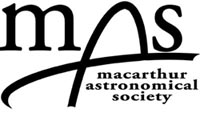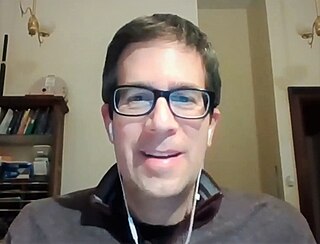
The International Astronomical Union is a nongovernmental organisation with the objective of advancing astronomy in all aspects, including promoting astronomical research, outreach, education, and development through global cooperation. It was founded in 1919 and is based in Paris, France.

The Astronomical Society of the Pacific (ASP) is an American scientific and educational organization, founded in San Francisco on February 7, 1889. Its name derives from its origins on the Pacific Coast, but today it has members all over the country and the world. It has the legal status of a nonprofit organization.

Lambda Sagittarii, formally named Kaus Borealis, is a star in the southern constellation of Sagittarius. The star marks the top of the Archer's bow.

Theta Aquarii, officially named Ancha, is a star in the equatorial constellation of Aquarius. Visible to the naked eye at apparent magnitude 4.175, it is located at a distance of around 187 light-years from the Sun. Since it is near the ecliptic it can be occulted by the Moon, or very rarely by planets.

The International Year of Astronomy (IYA2009) was a year-long celebration of astronomy that took place in 2009 to coincide with the 400th anniversary of the first recorded astronomical observations with a telescope by Galileo Galilei and the publication of Johannes Kepler's Astronomia nova in the 17th century. The Year was declared by the 62nd General Assembly of the United Nations. A global scheme, laid out by the International Astronomical Union (IAU), was also endorsed by UNESCO, the UN body responsible for educational, scientific, and cultural matters.
Stephen J. Edberg is a scientist at the Jet Propulsion Laboratory. He is perhaps best known for creating collaborative efforts between amateur and professional astronomers. A professional astronomer since 1970, Edberg still considers himself to be an active amateur astronomer as well and is an active astronomical observer, photographer, and telescope maker. He presently serves as staff astronomer for the Solar System Exploration website posted by NASA Headquarters and staff scientist for Earth science communication and for Exoplanet Exploration communication.
Universia is a network that consists of 1,401 universities in 20 countries: Andorra, Argentina, Bolivia, Brazil, Chile, Colombia, Costa Rica, Ecuador, El Salvador, Spain, Guatemala, Honduras, Mexico, Nicaragua, Panama, Paraguay, Peru, Portugal, Dominican Republic and Uruguay. It has 20 internet sites, one for each country, and a global site which offers information and contents from across the network. Universia network represents 10.1 million students, 8 million users and 850,000 university teaching staff ; the network is sponsored by Santander Bank.

Beta Pyxidis, Latinized from β Pyxidis, is a double star located in the southern constellation Pyxis. It has an apparent visual magnitude of 3.954, making it the second brightest star in that faint constellation. Based upon parallax measurements, the star is an estimated 420 light-years (128 parsecs) from the Earth.
HD 156411 is a 7th magnitude G-type main-sequence star located approximately 186 light years away in the southern constellation Ara. This star is larger, hotter, brighter, and more massive than the Sun. Its metal content is three-fourths as much as the Sun. The star is around 4.3 billion years old and is spinning with a projected rotational velocity of 1.8 km/s. Naef and associates (2010) noted the star appears to be slightly evolved, and thus may be in the process of leaving the main sequence. In 2009, a gas giant planet was found in orbit around the star.
HD 63765 is an 8th-magnitude G-type main sequence star located approximately 106 light years away in the constellation Carina. This star is smaller, cooler, dimmer, and less massive than the Sun, and has a lower iron content with approximately 69% of the Sun's iron-to-hydrogen ratio. In 2009, a gas giant planet was found in orbit around the star.
HD 164604 is a single star in the southern constellation of Sagittarius constellation. It has the proper name Pincoya, as selected in the NameExoWorlds campaign by Chile, during the 100th anniversary of the IAU. Pincoya is a female water spirit from southern Chilean mythology who is said to bring drowned sailors to the Caleuche so that they can live in the afterlife. A 2015 survey ruled out the existence of any additional stellar companions at projected distances from 13 to 340 astronomical units. It is known to host a single super-Jupiter exoplanet.

Macarthur Astronomical Society is an organisation of amateur astronomers, based in the Macarthur Region of outer South Western Sydney, NSW, Australia, including the local government areas of the City of Campbelltown, Camden Council, Wollondilly Shire, the City of Liverpool and surrounding districts.

The International Year of Light and Light-based Technologies 2015 or International Year of Light 2015 was a United Nations observance that aimed to raise awareness of the achievements of light science and its applications, and its importance to humankind. Under the leadership of UNESCO, the IYL 2015 brought together hundreds of national and international partners to organize more than 13,000 activities in 147 countries. The audience reached by the IYL 2015 is estimated to be over 100 million.
Christine D. Wilson is a Canadian-American physicist and astronomer, currently a University Distinguished Professor at McMaster University.
The Cyprus Space Exploration Organisation (CSEO) is a non-governmental, nonprofit, science organisation, based in Cyprus, with a global scope of service and activities. Its main functions are research and development, space advocacy, and international cooperation in the field of space exploration, astronautics and astronomy. Education and outreach are also an important part of its mission as International Astronomy Education Centre.
The Nepal Astronomical Society (NASO) is a Nepali learning community of professional astronomers and other interested individuals headquartered in Kathmandu. Its primary objective is to promote the advancement of astronomy, astrophysics and other closely related branches of science through various outreach and educational activities, while the secondary purpose includes enhancing the research in astronomy and astrophysics and providing a helpful and knowledgeable platform for members through its various activities. Its current mission is to enhance and share the knowledge of astronomy, astrophysics and humanity's scientific understanding of the universe.

Dean Regas is an American astronomer, public speaker, author, and television host. He is most widely known as the cohost of the syndicated television show Star Gazers, which airs daily on more than 100 PBS stations around the world. He has been the Outreach Astronomer for the Cincinnati Observatory since 2000 where he specializes in astronomy education and public speaking. Regas is the author of three books Facts From Space!, 100 Things to See in the Night Sky, and 100 Things to See in the Southern Night Sky.

Carolina Ödman-Govender was a Swiss physicist and academic who was Professor of Astrophysics at South Africa's University of the Western Cape. She was awarded the 2018 International Astronomical Union Special Executive Committee Award for Astronomy Outreach, Development and Education.

María Luisa Aguilar Hurtado, was the first professional astronomer of Peru. She studied at the Institute of Mathematics and Physics of the National University of San Marcos in Lima, Peru. She graduated as an astronomer from the National University of La Plata, Argentina. In 1981, motivated to develop astronomy at a professional level, she founded and served as director of the "Astronomy and Astrophysics Seminar", nowadays called "Permanent Astronomy and Space Sciences Seminar" of the National University of San Marcos.
The Ethiopian Space Science and Technology Institute (ESSTI) is an Ethiopian institute for research, training and infrastructure development in space science, created in 2016.











